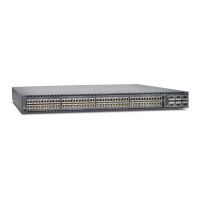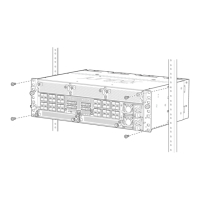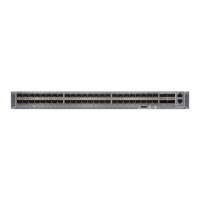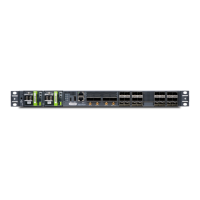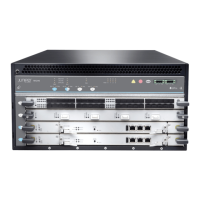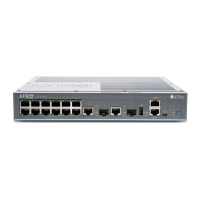vrf-table-label
Syntax vrf-table-label {
source-class-usage;
static;
}
Hierarchy Level [edit logical-systems logical-system-name routing-instances routing-instance-name],
[edit routing-instances routing-instance-name]
Release Information Statement introduced before Junos OS Release 7.4.
Support for the source-class-usage statement added in Junos OS Release 9.3.
Statement introduced in Junos OS Release 11.1 for EX Series switches.
Statement introduced in Junos OS Release 12.3 for ACX Series routers.
Statement introduced in Junos OS Release 15.1F5 and 16.1R2 for PTX5000 routers with
third-generation FPCs installed.
Statement introduced in Junos OS Release 15.1F6 and 16.1R2 for PTX3000 routers with
third-generation FPCs.
Statement introduced in Junos OS Release 16.1X65 and 17.2R1 for PTX1000 routers.
Support for the static statement added in Junos OS Release 17.2.
Description Map the inner label of a packet to a specific VPN routing and forwarding (VRF) instance.
This allows the examination of the encapsulated IP header. The first lookup is done on
the VPN label to determine which VRF instance to refer to, and the second lookup is done
on the IP header to determine how to forward packets to the correct end hosts.
When you include the vrf-table-label statement in the configuration of a VRF routing
instance, a label-switched interface (LSI) logical interface label is created and mapped
to the VRF routing table. Any routes in the VRF routing table are advertised with the LSI
logical interface label allocated for the VRF routing table. When packets destined for the
VRF routing instance arrive on a core-facing interface, they are treated as if the enclosed
IP packet arrived on the LSI interface and are then forwarded and filtered based on the
correct table.
All routes in a VRF routing instance configured with this option are advertised with one
label allocated per VRF.
NOTE:
• The vrf-table-label statement is supported on PTX5000 and PTX3000
routers only when third-generation FPCs are installed on the router and
enhanced-ip command is configured on the chassis.
• Starting in Junos OS Release 17.2, you can configure the enhanced-ip
command, which is supported on platforms using Modular Port
Concentrators (MPCs) equipped with Junos Trio chipsets. You can also
separate the MPLS labels used for different label spaces which provides
more flexibility and scalability. The vrf-table-label space is increased to at
least 16,000, if the platform can support the scale.
1779Copyright © 2017, Juniper Networks, Inc.
Chapter 41: Configuration Statements
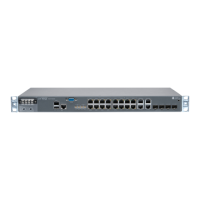
